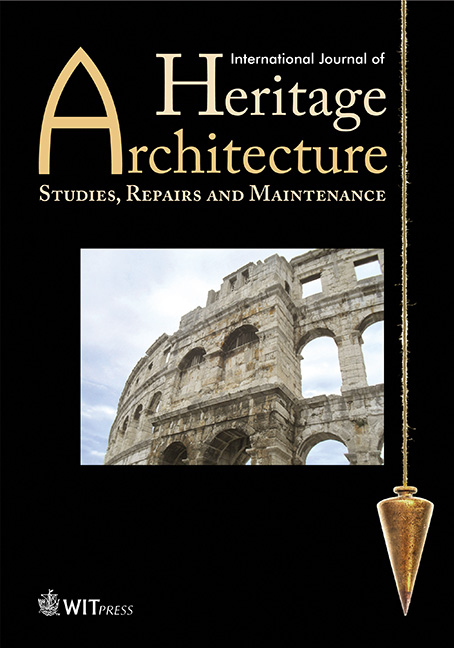‘AUGMENTED DIAGNOSTICS’ FOR THE ARCHITECTURAL HERITAGE
Price
Free (open access)
Volume
Volume 2 (2018), Issue 2
Pages
12
Page Range
248 - 260
Paper DOI
10.2495/HA-V2-N2-248-260
Copyright
WIT Press
Author(s)
MARIELLA DE FINO, ALBINA SCIOTI, ROCCO RUBINO, ALESSANDRA PIERUCCI & FABIO FATIGUSO
Abstract
Techniques and methods for assessment and control of the historical-architectural heritage have recently gained high levels of maturity in the scientific debate and professional practice. Nevertheless, they still address challenging research topics. Particularly, future developments might come from the multi-disciplinary integration of hardware and software tools, mainly used in different fields and/or with different purposes, as well as from the multi-level correlation of data by different documentary, analytical and experimental sources.
Within this framework, this article presents the methodological approaches and preliminary results of a research project: ‘Contactless diagnostics for augmented reality of the cultural heritage with low accessibility’, currently carried out under the funding programme of the Italian Ministry of Education, University and Research ‘MIUR Start-Up’. In detail, the article provides an overview of the general goals of the project, which is focused on the development of procedures and devices for the assessment of technical and constructional characteristics in historic buildings by photogrammetric/thermographic ultralight sensors on unmanned aerial vehicles (UAVs), towards the collection and management of diagnostic data in virtual and augmented reality environments.
Thus, specific focus will be paid to the preliminary studies on a representative pilot case, where several research phases have been developed, including analysis of historic records, photographical survey for three-dimensional modelling, mapping of materials, construction techniques and decay patterns, as well as on-site investigation by non-destructive diagnostic methods. All the results will be discussed in order to address the implementation of the ‘augmented diagnostics’ of the monument, in terms of correlation of themes and integration of specialisms, as outlined in the introduction.
Keywords
architectural heritage, augmented virtual reality, diagnostic techniques, UAVs




